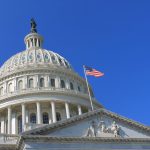Published March 18, 2013
The House Energy and Commerce Health Subcommittee held a hearing on “Saving Seniors and Our Most Vulnerable Citizens from an Entitlement Crisis” on March 18, 2013.
A video of the entire hearing is available below. Written statements submitted by all witnesses are here. Mr. Capretta’s written statement is available here and below.
Chairman Pitts, Mr. Pallone and other members of the subcommittee, thank you for the opportunity to testify before your committee today.
The most serious threat to the nation’s long-term prosperity is the rapid and unfinanced growth of entitlement spending. Left unchecked, spending commitments for these programs will push federal deficits and debt to levels that many economists fear will precipitate a crisis. Experience shows that the consequences of such a crisis would be especially disastrous for the most vulnerable segments of our society, including those who are dependent on these programs for their financial security and health needs.
The Dimensions of the Problem
The three largest entitlement programs today are Social Security, Medicare, and Medicaid. According to the Congressional Budget Office (CBO), total spending on these programs was just 4.8 percent of GDP in 1973, as shown in Chart 1. In 2012, four decades later, spending on these programs had reached 10.0 percent of GDP. That jump in spending — 5.2 percentage points of GDP — is larger than today’s federal commitment to national defense.
Recently, CBO lowered the expected growth rates for the Medicare and Medicaid programs over the coming decade, but even with an expectation of slower per person spending growth, total spending on these programs is still set to rise very rapidly. As shown in Chart 2, in its latest projections, CBO shows combined spending on Medicare, Medicaid, and the new subsidy program from the 2010 health care law rising from $0.8 trillion in 2012 to nearly $1.8 trillion in 2023. That $1 trillion jump in spending represents 55 percent of the difference between total, non-interest federal spending in 2023 compared to 2012. Put another way, and essentially by default, the major health entitlement programs will crowd out every other possible priority and consume more than half of all additional resources at the federal level.
Looking further out into the future, the problem is even more daunting. Both CBO and the actuaries who produce the Medicare projections for the annual trustees’ report expect health care cost inflation, along with a surge in enrollment in the programs, to push federal health entitlement spending up rapidly in the coming decades. In projections released last summer, CBO estimated that the combined spending on Medicare, Medicaid, and the health law’s new premium subsidy program would rise from 5.4 percent of GDP today to 8.4 percent in 2030 and 11.4 percent in 2050, as shown in Chart 3.
And these projections assume very deep cuts in what Medicare pays those providing services to seniors — an assumption that is highly questionable. CBO provides an additional long-term projection to take into account the possibility — and some would say the likelihood — that these cuts will be reversed or altered in some fashion in the future. Under the “alternative fiscal scenario,” spending on the major health entitlement programs is expected to rise to 12.4 percent of GDP in 2050.
The Consequences of Various Approaches to the Problem
Our budget situation today would be far worse if not for large offsetting budgetary cost reductions that have made some room in the budget for higher entitlement spending. In the 1980s, average defense spending was 5.8 percent of GDP. But after the Cold War ended, there was a major drawdown in defense commitments that continued even during the Iraq and Afghanistan wars. Between 2000 and 2009, defense spending averaged 3.8 percent of GDP — a full two percentage points of GDP less than two decades earlier. All of that savings, and more, has gone to higher entitlement expenses.
Unfortunately, there is no more room for such major defense cutting, which is why rising entitlement costs are now causing significant dislocation in the rest of the budget. In August 2011, the President and Congress enacted the sequester that is now cutting domestic discretionary programs across the board by 5 percent. Many in Congress are worried that these cuts will reduce the level of services provided to the American people, and there is special concern for what the cuts might mean for the most vulnerable Americans. It is quite plain that the reason the blunt instrument of the sequester was enacted in 2011 is due in large part to the unaddressed problem of rising entitlement costs. The budget must be cut somewhere, and if there is no consensus on entitlement savings, then the cuts will inevitably fall on the discretionary accounts, including education, job-training programs, and public health funding.
One approach to the problem would be to attempt to control costs in the health entitlement programs through the lowering of what the federal government pays for various medical services. This approach to cost control was featured heavily in the 2010 health care law. Since the law was enacted, there has been a great deal of attention on certain reforms, such as accountable care organizations, that some analysts hope will “bend the cost curve” by altering how services are rendered to patients. But there’s no evidence that this will occur, and the savings from such provisions were essentially non-existent in CBO’s estimates of the law.
Instead, the 2010 law achieved large savings in Medicare the same way savings, at least on paper, have been achieved in the past — with large downward revisions in what Medicare pays for services. In particular, the law included an annual “productivity factor” adjustment that will reduce payments to institutions providing care, including hospitals, to levels that are well below what the actuaries expect will be necessary to cover the cost of caring for Medicare patients. According to the 2012 Trustees’ Report, the cuts will push revenue down so much that about 15 percent of all hospitals and other institutional providers of care will have negative total margins — meaning they will be operating in the red and in danger of insolvency. The predictable response of these institutions will be to take steps to limit their losses by avoiding Medicare patients. And that will mean seniors will begin to find it harder to find providers who will care for them. The actuaries expect the percentage of “underwater” providers will reach 25 percent by 2030 and 40 percent by 2050.
The actuaries have also made it very clear that they don’t expect this to happen because the political pressure from inadequate access to care among seniors would force policymakers to enact revisions and increase payment rates. This is the primary reason why the actuaries have made it plain that the projections of Medicare spending under current law are unrealistic. It is also why, in each of the last three years, they have issued alternative projections of Medicare costs, simultaneous with the annual trustees’ report, that assume higher reimbursement rates. As shown in Chart 4, under the latest alternative projection, Medicare spending rises even more rapidly in the decades ahead and reaches nearly 10 percent of GDP by the end of the projection period.
Another approach to solving the problem would be to raise taxes to cover the added costs of rising entitlement spending. In 2030, the total cost of the Medicare and Medicaid programs will be at least 8.4 percent of GDP, a full 3 percentage points above the spending level in 2012. It might be possible to cover this added cost through hikes in either income or payroll taxes, or possibly both, but the tax hikes would have to be very large.
For instance, as of 2013, the federal individual income tax is expected to generate revenue equivalent to about 7.8 percent of GDP. Increasing that by 3 percentage points would thus imply a nearly 40 percent tax hike across the board. Such a hike would hit above-average-income households especially hard, but the middle class and lower middle class would not be spared. For a median household income, a 40 percent income tax hike would amount to $400 per year in today’s terms.
Of course, relying entirely on income tax hikes to cover Medicare’s long-term cost increases would fundamentally change the nature of the program, away from an earned benefit financed by payroll taxes to a benefit financed by general taxation, and thus more like a transfer payment. But covering Medicare’s added costs with payroll tax hikes would hit the middle class even harder than income taxes and would be especially burdensome on younger Americans who would be forced to pay for Medicare twice — once for the coming generation of retirees, and then again for their own health care needs in retirement. Covering the added Medicare costs implicit in the actuaries’ alternative scenario — roughly 3 percent of GDP over the long run — with payroll taxes would imply doubling today’s Medicare tax rate of 2.9 percent of earned income (this is the rate that applies to all but the highest income households). Doubling the Medicare payroll tax would mean nearly $1,500 in higher taxes for households with annual wages of about $50,000.
Conclusion
The most significant risk of all for those dependent on the nation’s social safety net is that, in the midst of a federal debt crisis, abrupt changes in policies would be required to continue borrowing at preferential rates in the global market. That has certainly happened to other countries that were mired in debt, and it is not out of the question that it could happen here.
The federal government’s outstanding debt now stands at about 73 percent of GDP. CBO expects the debt burden to rise to 77 percent of GDP over the next decade, and those projections assume no economic downturn or spike in interest rates. There is now a very clear and real risk that, with a bad break or two, the U.S. could find itself struggling to service its debts without significant, near-term changes in spending commitments.
It would be far better for all concerned if policymakers began today to lower the risk of such a crisis by moving forward with sensible reforms of the nation’s major entitlement programs. There is still time to enact changes that are gradual enough to protect today’s retirees from abrupt changes even as the reforms ensure that the programs can be sustained for future generations. Reforms of this kind are never without controversy but it would be far better to take on difficult challenges now than to wait for the crisis to be upon us.
James C. Capretta is a senior fellow at the Ethics and Public Policy Center.
[1] 2012 Annual Report of the Boards of Trustees of the Federal Hospital Insurance and the Federal Supplementary Medical Insurance Trust Funds, April 2012, p. 217 (http://www.cms.gov/Research-Statistics-Data-and-Systems/Statistics-Trends-and-Reports/ReportsTrustFunds/downloads/tr2012.pdf).
[2] Calculated using CBO’s supplementary tables accompanying the report, “The Distribution of Household Income and Federal Taxes, 2008 and 2009,” July 2012 (http://www.cbo.gov/publication/43373).













